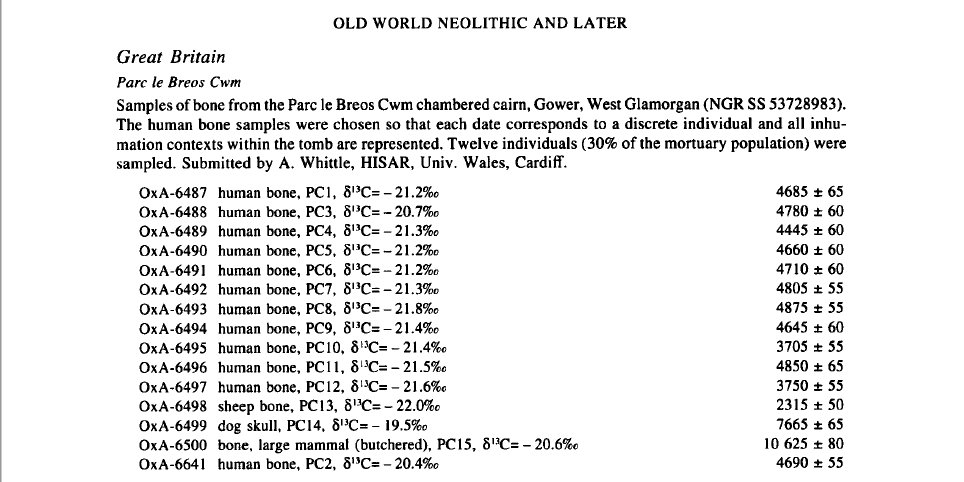Last time on the blog, we were talking about some of the really important sources of radiocarbon data that we have been using in our data collection for Project Time. Between these sources, it feels like we have managed to collect a lot of (perhaps even the majority of) the available measurements for 3500–1500 cal BC. However, the radiocarbon data is not presented in the same way in all of these sources, and in some cases some details that we need are missing. Sometimes this might be details of the measurement itself (such as the δC13, which is important in assessing the accuracy and precision of the radiocarbon measurement, as we discussed a few blog posts ago, or it might be details of the sample used, or where on a particular site, or in a particular archaeological feature or context a sample originally came from. It is really important we collect this information for every measurement, as we need details of the sample, and where the sample came from (and its stratigraphic relationship to any other samples on the site) in order to use them in the Bayesian statistical models we will be creating for our sites in the near future.
So, we have a big list of measurements from a range of different sources, but some are missing some of these fields of data – where do we get them from? Well, we go back to the source, and for this, that means the official lists of measurements published by radiocarbon laboratories. These are publications in journals, such as Radiocarbon or Archaeometry, and they report all of the measurements produced by the laboratories in the time since the last list was published (as long as the submitter agrees) – these can include sites from Britain and Ireland, as well as sites from around the world. A wide range of radiocarbon laboratories publish date lists, including the British Museum (with 26 published lists spanning 44 years), Harwell (11 published lists over 18 years) and the Oxford Radiocarbon Accelerator unit (with 33 published lists since 1984, spanning a whopping 785 pages!). A number of these, such as the Oxford AMS date lists, are free access too (continuing our open access theme from the last blog post). Within these date lists, we can find the radiocarbon measurement, lab code, sample details, δC13, and in most cases, a discussion of the measurements in relation to the site.

One slight problem is that not all of the radiocarbon laboratories produce published date lists and some labs produce so many radiocarbon measurements these days that it is not always practical for the lab to produce comprehensive date lists. However, for sites in England, many of the results can be found in the catalogues of radiocarbon dates published by Historic England (formally English Heritage). These provide full technical details of all the radiocarbon measurements funded by them, and currently span projects between 1970–2007 (which can be found here). For sites in Scotland, Wales or Ireland, there is not a direct equivalent of the Historic England date lists, however, we can use the radiocarbon databases for these areas that we discussed in the last blog – these have references to the original publication of sites, which will have the radiocarbon measurement details in them (if we can’t find them on a published lab date list).
The published date lists have been vital sources during our data collection; it has been quite regular to find radiocarbon measurements mentioned in publications, project databases or other sources (which we will discuss in our next blog post), but with some of the details missing. These details are crucial because we need them when producing Bayesian models. The date lists are where we go to confirm the information we have, and to fill in any gaps.
You might think this wraps our data collection process up, but you would be wrong! Come back next time for the final installment of our data collection run-down.
